Turbulent Flames
Call for submissions forms:
-
ISF-5 target flame 1: Adelaide jet flames 1-6
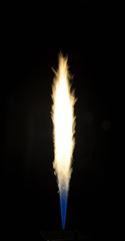
Summary:
- An overview of the six flames and available data is provided in a one page PDF document.
Dimensions:
- Nozzle internal diameters: 4.4 mm, 5.8 mm, 8.0 mm
Flow conditions:
Bulk jet exit Reynolds number: 5,000; 8,000; 9,000; 15,000
Bulk jet exit strain rate (s-1): 4,100; 7,500; 12,900More information about the flames:
- Adelaide jet flame 1 (details, data, video)
- Adelaide jet flame 2 (details, data, video)
- Adelaide jet flame 3 (details, data, video)
- Adelaide jet flame 4 (details, data, video)
- Adelaide jet flame 5 (details, data, video)
- Adelaide jet flame 6 (details, data, video)
Contact: Professor Bassam Dally
-
ISF-5 target flame 2: Sandia flame
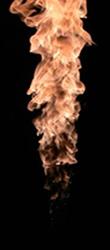
Dimensions
- Nozzle internal diameter = 3.2 mm
- Inner wall thickness = 0.65 mm
- Pilot outer diameter = 19.1 mm
- Outer wall thickness = 1.95 mm
Fuel jet: Ethylene
Pilot: Ethylene/air at equivalence ratio of 0.9 and thermal power of 2%
Flow conditions
- Fuel average jet velocity = 54.7 m/s
- Co-flowing air mean velocity = 0.6 m/s
- Exit Reynolds number = 20,000
- Fuel temperature = 294 K
Measurements
- Soot volume fraction by LII
- Simultaneous soot volume fraction and temperature with 3-line soot pyrometry
- OH PLIF
- PAH PLIF
- Radiant emission
Data files
- Current processed soot concentration data files (mean and rms)
- Temperature-OH-PAH-Radiation data
Further information
View more information about the turbulent ethylene target flame.
View more information about the geometry and measurements techniques.
View a publication that provides additional information about the burner design and operation.
Contact: Chris Shaddix
-
ISF-5 target flame 3: Adelaide bluff body flames 1-4

Dimensions: Nozzle internal diameter: 3.6 mm; Bluff body diameter: 50.0 mm
Fuel jet: Flames 1-3 ethylene-hydrogen: flame 4 LPG
Flow conditions: Bulk jet exit Reynolds number: ~30,800
Summary: Download an overview of the 4 flames and available data.
Data files: Data for intermittency and average value of soot volume fraction is available for each flame.
Contact email: Professor Bassam Dally
-
ISF-5 target flame 4: swirled pressurised
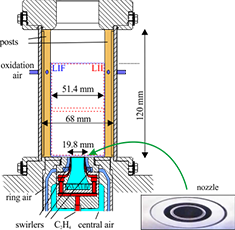
Image: Schematics of burner
Dimensions:
- Swirl nozzle diameter = 19.8 mm (outer air flow)
- 60 fuel channels of 0.5x0.4 mm2 on an annulus of approx. 13.5 mm diameter
- Suite of 16 flames of varying operating conditions, reference case of highest preference is at 3 bar, equivalence ratio 1.2 with oxidation air
Fuel: Ethylene
- Absolute pressure range: 1 – 5 bars
- Exit Reynolds number various
- Fuel mass flow 2-65 slm
- Air mass flow 31-870 slm
- Ox. air mass flow 0-350 slm
- Fuel temperature 293 K
- Air temperature 293 K
- Power 2-65 kW
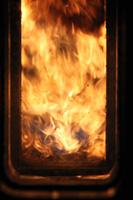
Measurements:
Soot volume fraction by LII, temperature by CARS, OH distribution by OH LIF, velocity distribution by PIV, in addition OH* chemiluminescence and soot luminosity.- Computational grid available
- View more details on the measurements
Data are reported for example by:
K.P. Geigle et al., J. Eng. Gas Turbines Power 136, 021505, 2014, doi 10.1115/1.4025374
K.P. Geigle et al., Proc. Combust. Inst. 2014, doi 10.1016/j.proci.2014.05.135
C. Eberle et al., AIAA Joint Propulsion Conference, AIAA 2014-3472, 28.-30.07.2014, Cleveland, USA
K.P. Geigle et al., Appl. Phys. B. 2015, doi 10.1007/s00340-015-6075-3
Data is available on request from Klaus-Peter Geigle
-
ISF-5 other flame 1: Delft Adelaide flame
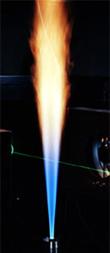
Dimensions: Nozzle diameter = 6 mm; Primary air annulus diameter = 45 mm
Main jet: Natural gas (approx. 81% CH4, 14% N2)
Pilot: The pilot burns a premixture of C2H2/H2/air.
Flow Conditions: Ujet=21.9 m/s, Uann=4.4 m/s, Ucoflow=0.3 m/s
Scalar Measurements in the base of the flame: Raman/Rayleigh/LIF measurements of F, T, major species, CO, OH, and NO were obtained in the TDF lab at Sandia. Accuracy of some species measurements in some locations is limited by high levels of fluorescence interference from soot precursors. CARS temperature measurements and OH PLIF imaging, performed at TU Delft, have also been reported for this flame. Time resolved OH PLIF imaging, using the system at Lund University, has also been done. References are in the documentation file.
Contact: Dr Dirk Roekaerts
Velocity Measurements: Velocity measurements were obtained at the Delft University of Technology.
Contact: Dr Dirk Roekaerts
Soot Measurements: Measurements of soot volume fraction were obtained at the University of Adelaide, as reported by Qamar et al. (2009), Combustion and Flame, 156, 1339-1347.
Download a copy of the data
Contact: Prof Bassam Dally
-
ISF-5 other flame 2: DLR lifted ethylene jet flame
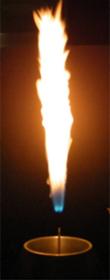
Dimensions: Nozzle diameter = 2.0 mm; Co-flow air annulus diameter = 140 mm
Fuel jet: Ethylene
Absolute ambient pressure: 959-981 mbar
Exit Reynolds number: 10 000
Fuel mass flow: 10.4 g/min
Air mass flow: 320 g/min
Fuel temperature: 297 ±5 K
Air temperature: 311 ±5 K
Mean fuel jet velocity: 44 m/s
Power: 8.7 kW
Lift-off height: 23 mmMeasurements: temperature by CARS, Simultaneous OH* and soot volume fraction by LII, Simultaneous velocity by PIV and soot volume fraction by LII, mixture quantification upstream of ignition by Raman scattering.
View more details on the measurements.
Data is reported by:
Köhler et al. (2011), Applied Phys. B, 104:409-425.
Köhler et al. (2012), Combust. Flame, 159: 2620–2635Data is available on request from: e-mail: Markus Koehler or Klaus-Peter Geigle.
-
ISF-5 target flame 5: Adelaide Bluff-body flame
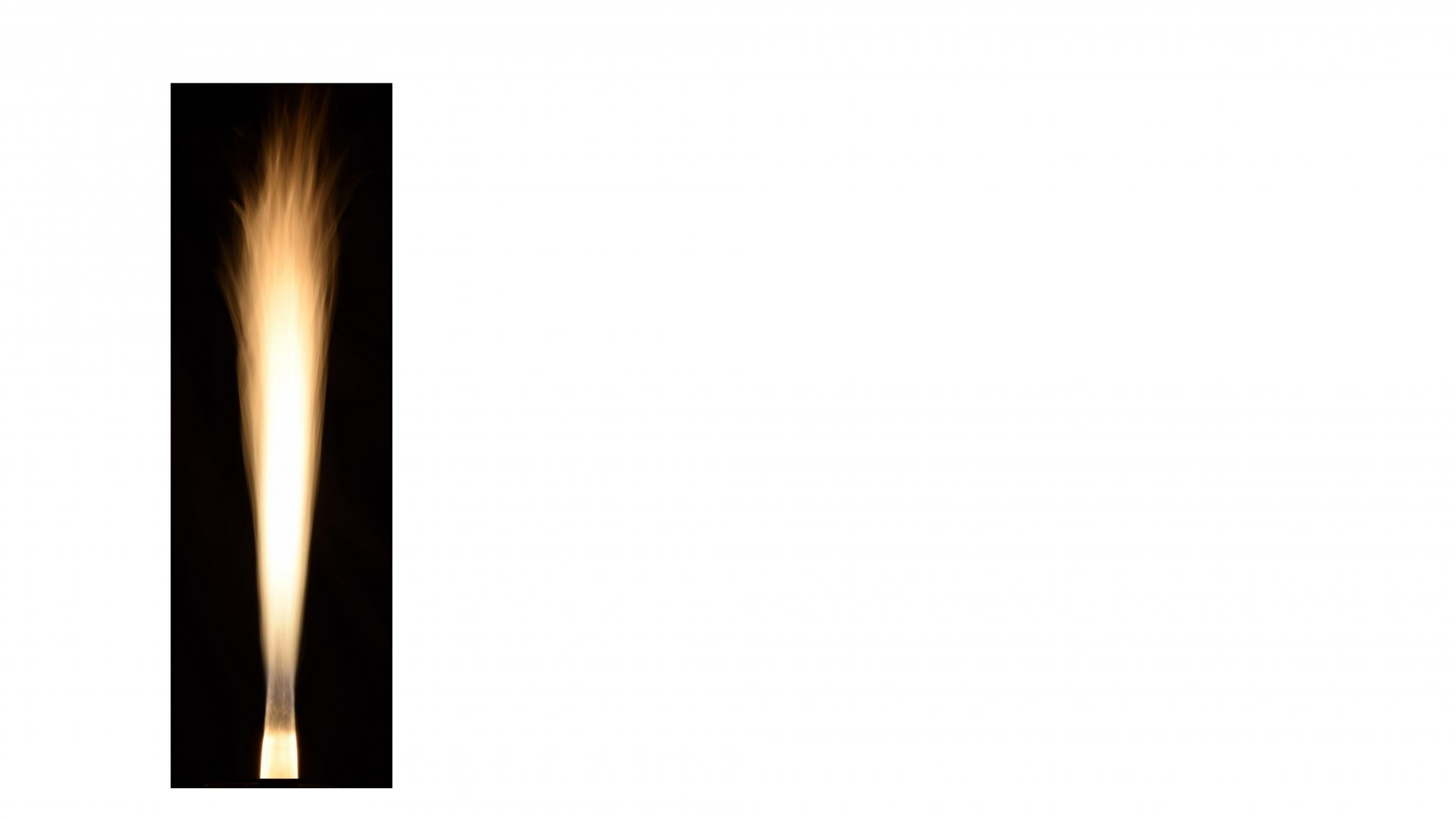
Dimensions: Nozzle internal diameter: 4.6 mm; Bluff body diameter: 38 mm (ENB_1), 50 mm (ENB_2), 64 mm (ENB_3)
Flow conditions: Bulk jet exit Reynolds number: 15,000 for all flames
Summary: An overview of the three flames is provided in a one page PDF document.
Data files: Data for flowfield and soot volume fraction is available for each flame:
- Flame 1 (ENB_1): SVF, Flow-field
- Flame 2 (ENB_2): SVF, Flow-field
- Flame 3 (ENB_3): SVF, Flow-field
Contact email: Professor Bassam Dally
